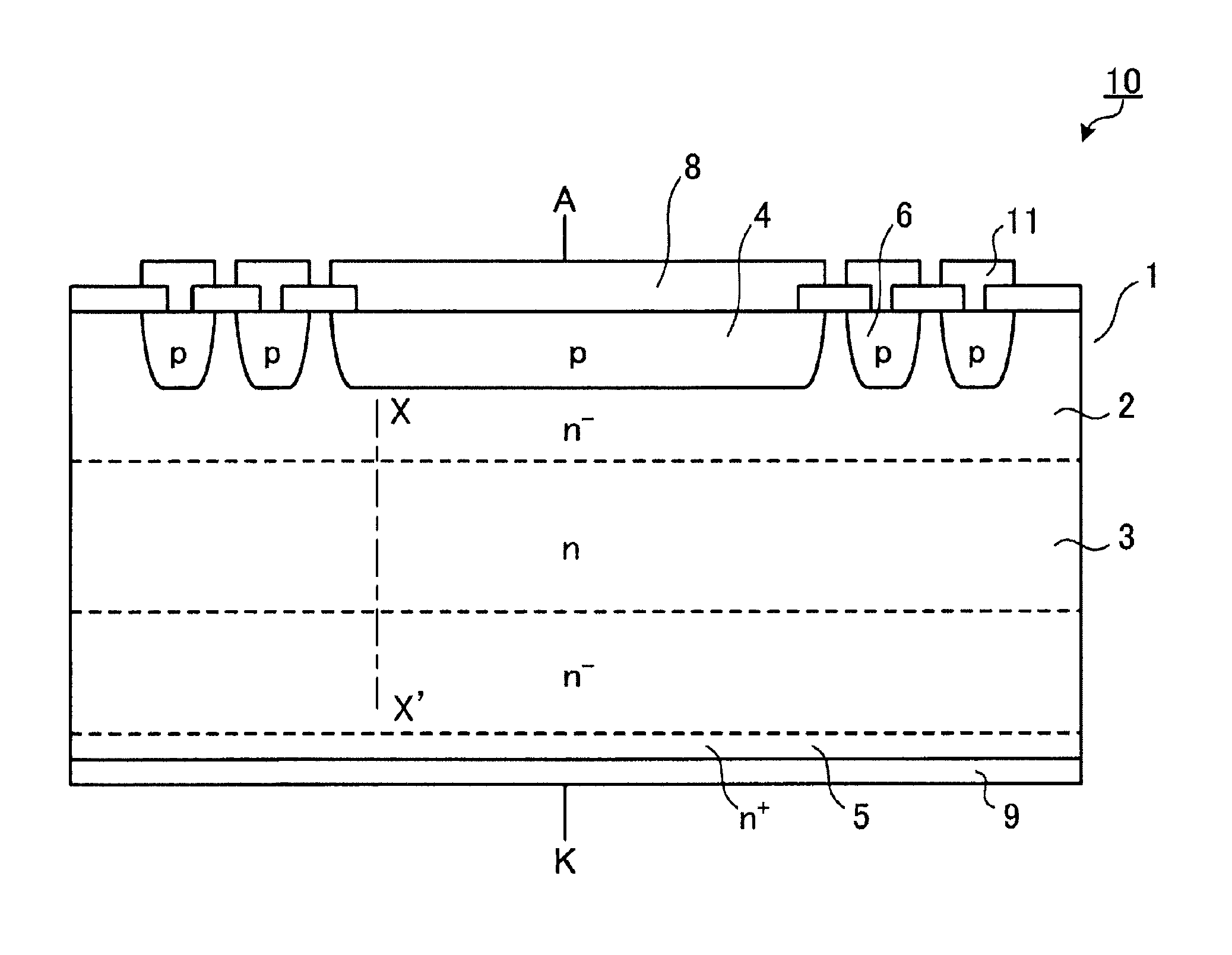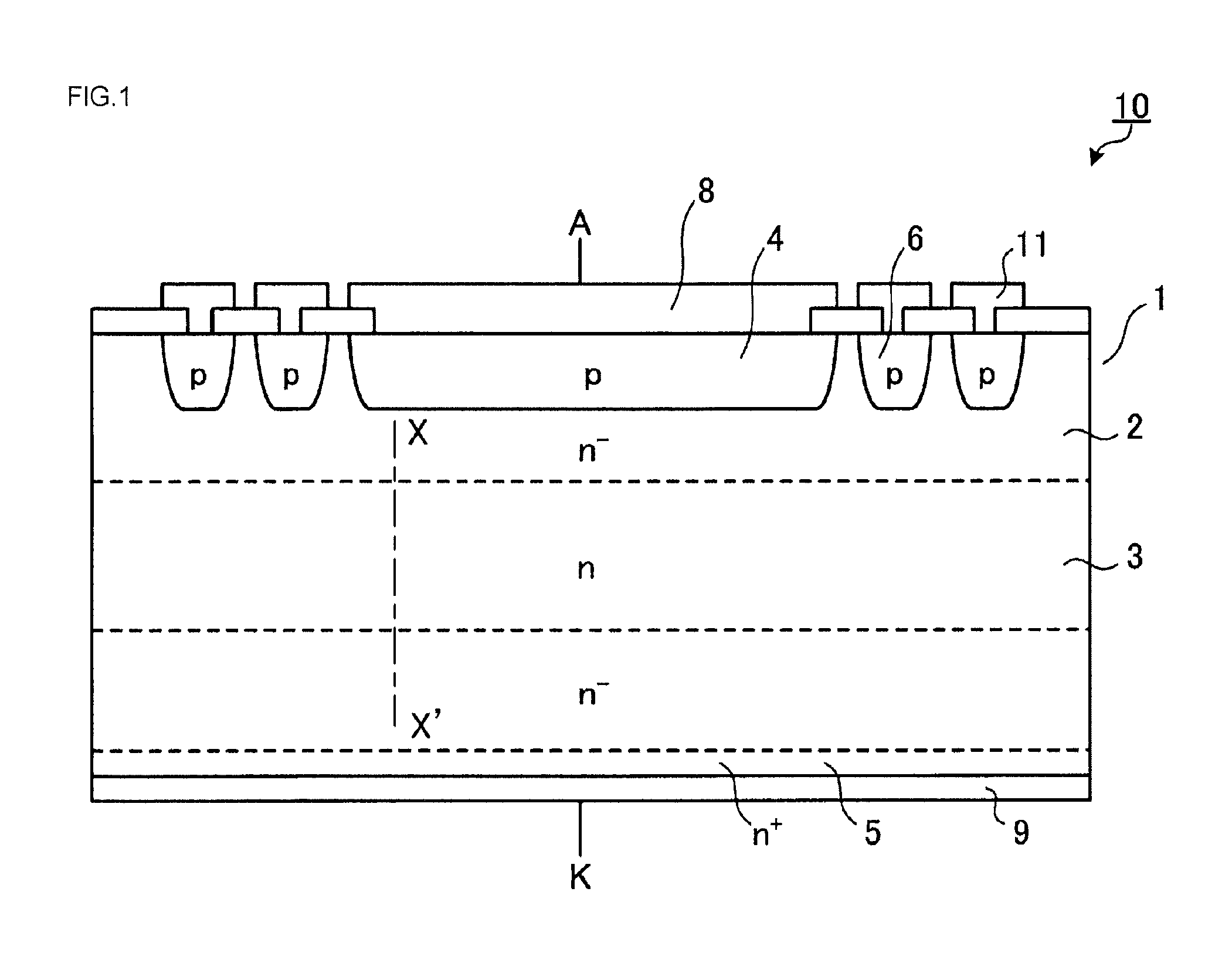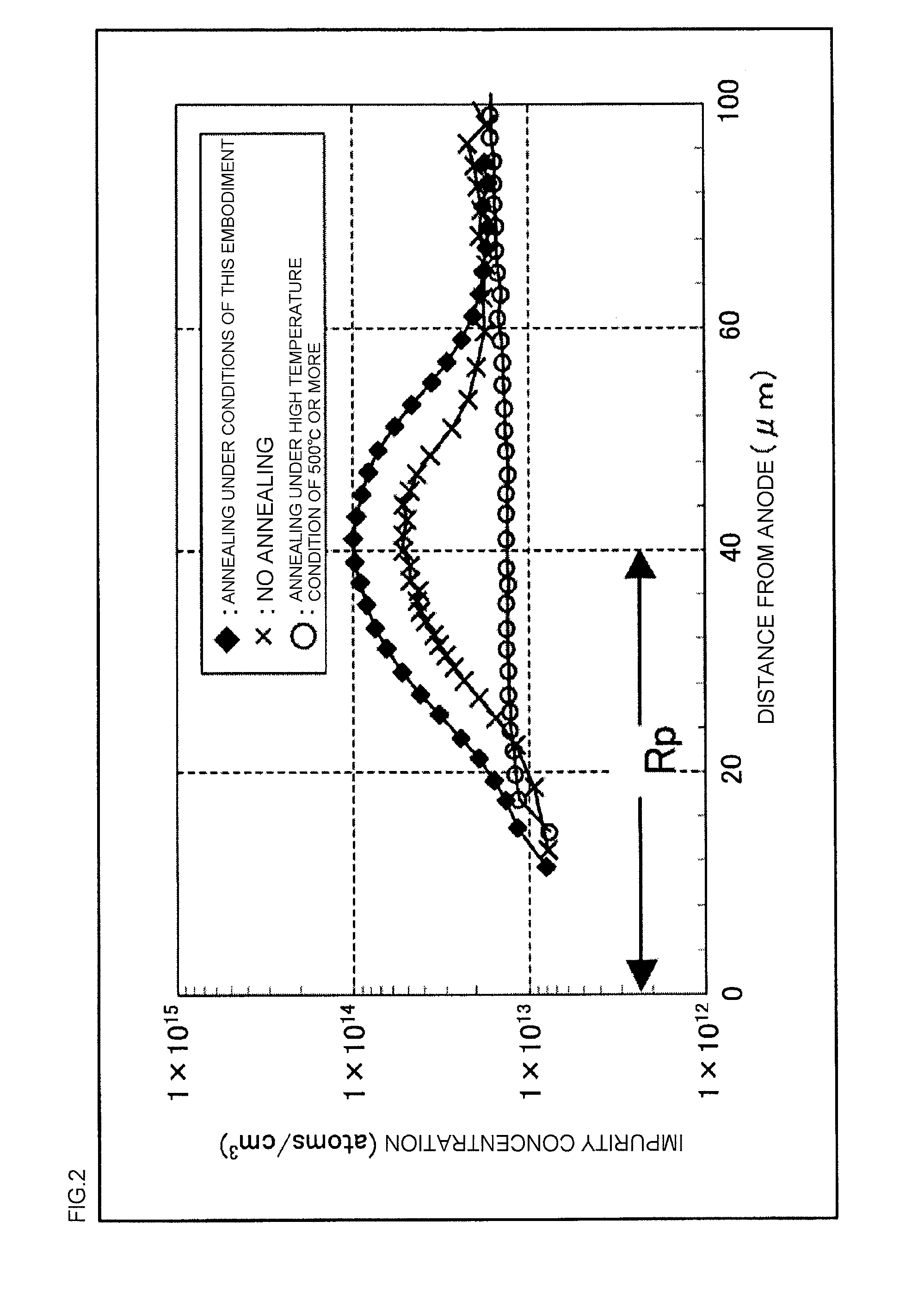Semiconductor device and method of manufacturing semiconductor device
a semiconductor and semiconductor technology, applied in semiconductor/solid-state device testing/measurement, semiconductor/solid-state device details, diodes, etc., can solve the problems of difficult heat treatment of activating the fs layer, low yield, and high risk of wafer breakage, so as to suppress an increase in leakage current and suppress the effect of on-voltag
- Summary
- Abstract
- Description
- Claims
- Application Information
AI Technical Summary
Benefits of technology
Problems solved by technology
Method used
Image
Examples
embodiment 1
[0079]The structure of a semiconductor device according to embodiments of the invention will be described. FIG. 1 is a schematic cross-sectional view illustrating the structure of the semiconductor device according to the embodiments of the invention. The semiconductor device shown in FIG. 1 is a pin diode 10 including a BB layer which is a donor layer 3 formed by proton radiation. Specifically, the donor layer 3 is provided at a depth corresponding to near the center of an n-type drift layer 2 which is a silicon semiconductor substrate (n− semiconductor substrate) 1. When the donor layer 3 is formed, first, a crystal defect is formed in the n-type drift layer 2, which is the silicon semiconductor substrate 1, by proton radiation. In Example 1 which will be described below, a proton dose was 1×1012 (atoms / cm2) and acceleration energy was 8 MeV (hereinafter, referred to as proton radiation conditions of this embodiment). After the proton radiation, a heat treatment is performed to ch...
embodiment 2
[0085]Next, the relationship between the peak intensity of a DLTS signal and an annealing temperature and the relationship between donor peak concentration and the annealing temperature when annealing is performed under the conditions of this embodiment, when no annealing is performed, and when annealing is performed under a high temperature condition of 500° C. or more. FIG. 3 is a characteristic diagram illustrating a DLTS spectrum waveform of a semiconductor device according to Example 1 after proton radiation. FIG. 4 is a characteristic diagram illustrating the relationship between the annealing temperature and the peak intensity of the DLTS signal after proton radiation in the semiconductor device according to Example 1. FIG. 5 is a characteristic diagram illustrating the relationship between the annealing temperature and the donor peak concentration after proton radiation in the semiconductor device according to Example 1.
[0086]FIG. 3 shows the spectrum waveform which is the D...
embodiment 3
[0100]Next, a method of manufacturing the semiconductor device according to embodiments of the invention will be described in detail. In this embodiment, an example in which the pin diode with a breakdown voltage of 1200 V shown in FIG. 1 is manufactured will be described. An FZ-n-type silicon semiconductor substrate 1 (hereinafter, referred to as a wafer 1) with a resistivity of 90 Ωcm (a phosphorus concentration of 5.0×1013 atoms / cm3) is prepared as the silicon semiconductor substrate. A heat treatment is performed in a nitrogen and oxygen atmosphere at a temperature of 1250° C. for 100 hours to thermally diffuse phosphorus to a depth of about 80 μm from both main surfaces of the wafer 1. The surface impurity concentration of a phosphorus diffusion layer formed in the wafer 1 is, for example, about 1.0×1020 atoms / cm3. A large amount of oxygen is introduced from both surfaces of the wafer 1 into the wafer 1 by the heat treatment and the oxygen concentration of the wafer 1 becomes s...
PUM
 Login to View More
Login to View More Abstract
Description
Claims
Application Information
 Login to View More
Login to View More - R&D
- Intellectual Property
- Life Sciences
- Materials
- Tech Scout
- Unparalleled Data Quality
- Higher Quality Content
- 60% Fewer Hallucinations
Browse by: Latest US Patents, China's latest patents, Technical Efficacy Thesaurus, Application Domain, Technology Topic, Popular Technical Reports.
© 2025 PatSnap. All rights reserved.Legal|Privacy policy|Modern Slavery Act Transparency Statement|Sitemap|About US| Contact US: help@patsnap.com



